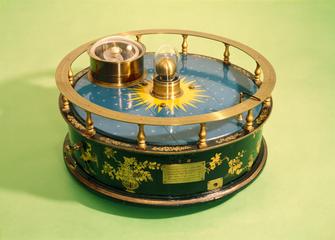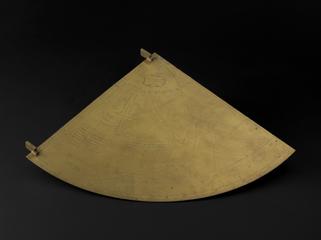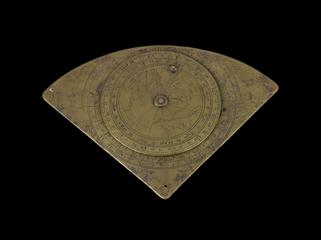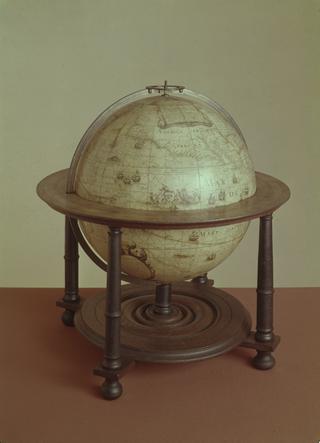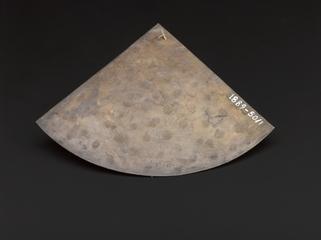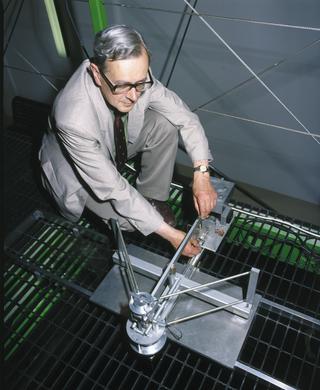
Gyroscopic artificial horizon.
- designer:
- Georges Ernest Fleuriais




Artificial horizon, gyroscopic type, in fitted rectangular mahogany case, possibly made by A. Demichel of Paris, France, 1886-1895. Invented by French Admiral and inventor, Georges Ernest Fleuriais (1840-1895). Consisting of an air-powered (separate pump) gyroscope, within a black-lacquered brass case that is attached to the side of a sextant or quitant. A piece of glass through the body of the gyroscope carries a series of horizontal lines, which appear as a constant horizontal line of reference when the device is spun.
Details
- Category:
- Astronomy
- Object Number:
- 1923-516
- Materials:
- brass (copper, zinc alloy), steel (metal), glass and mahogany
- credit:
- The Royal Society
